Vermes
Advanced Member level 4


The reasons why this mini cheat sheet arose were:
- testing a way to connect LCD and the memory card with the microcontroller
- writing program in BASCOM difficulty level
- checking the skills and getting ready for a bigger project (nothing is better than practice to get some experience)
The system is maximally simple because of its dimensions. The main elements used:
- microcontroller: Atmega32L-8AU
- display: NOKIA 3100 (PCF8833 driver)
- memory card: Micro-SD (tested: 128MB and 1GB, both suitable)
- power: Li-Ion battery 3,7V/600mAh
The schema:
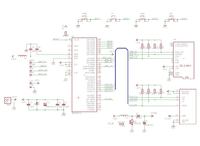
System description:
The microcontroller actually has 41% Flash memory. Most of this make the procedures, that create quite simple graphic design. Unfortunately, some of them may cause problems.
The navigation between the clock and the list with .txt files or only between the files is through four buttons placed under the display. Interactions with the device are possible by pressing the edges of the display.
The memory card is linked with hardware SPI, what ensures a quicker communication. Although while reading texts files, it isn't very noticeable.
The system is powered by Li-Ion battery 3,7V/600mAh. It is enough for about 24h of system working. The tension is limited by Zener LED 3,3V. Most of the tensions are uniformed that way. Only back light of the display is powered by 6-7V. It uses a really simple converter on Atmega PWM.
On of the most important things is that the dimensions of the PCB shouldn't be bigger than the display. That is why the SMD elements should be as small as possible (the smallest ones from RLC group in 0603 housing).
The list of materials needed in this project, libraries for the display and micro-SD are attached below.
Construction:

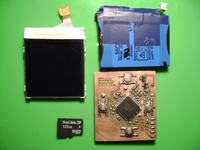
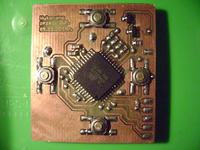
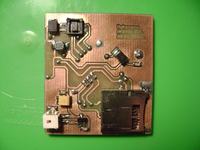
Action:

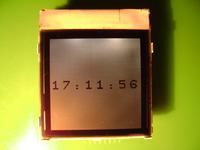
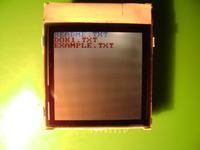
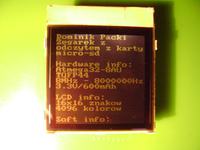
The programming plug is made of a truncated connector from a SD card (the distribution of pins and pads was excellent. The clip has a ground cable also called GND).

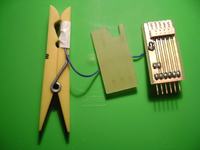
Link to original thread - "uŚciąga" - Atmega32, LCD i karta pamięci